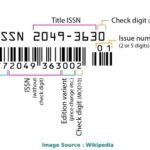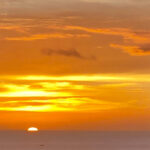Tourism significantly impacts the ocean, and SIXT.VN is here to help you understand this complex relationship while providing solutions for sustainable travel in Vietnam. By choosing responsible travel options and understanding the impacts, we can minimize negative effects and preserve marine ecosystems for future generations. Discover eco-friendly travel and explore coastal tourism responsibly.
1. What Are the Primary Ways Tourism Impacts the Ocean?
Tourism significantly affects the ocean through several key factors: coral reef destruction, marine pollution, overfishing, coastal developments, boat traffic, and noise pollution. These impacts degrade marine ecosystems and threaten biodiversity, making responsible tourism essential for preservation.
The tourism industry, while economically beneficial, can inadvertently harm marine environments. According to the United Nations Environment Programme (UNEP), tourism activities contribute significantly to coastal degradation and pollution. Let’s break down the primary ways tourism affects the ocean:
-
Coral Reef Destruction: Snorkeling and diving, while popular activities, can lead to physical damage to coral reefs. Careless divers may break or damage coral structures, and the chemicals in sunscreen can cause coral bleaching. According to the International Coral Reef Initiative, approximately 50% of the world’s coral reefs have been damaged by human activities.
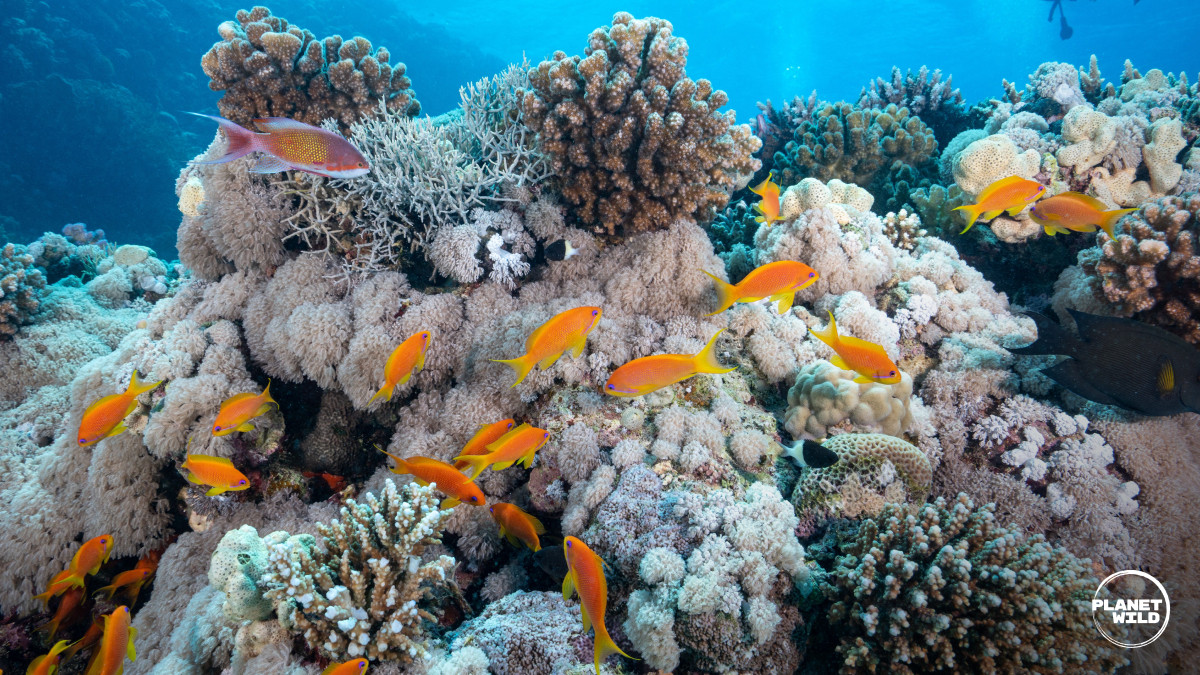 Coral reef and fish
Coral reef and fishCoral reefs are home to millions of species
-
Marine Pollution: Tourism generates significant amounts of waste, including plastic, litter, and sewage, which often ends up in the ocean. Cruise ships, in particular, can discharge large quantities of waste into the sea. A study by the Marine Conservation Society found that marine litter increases by up to 40% during peak tourist seasons in some regions.
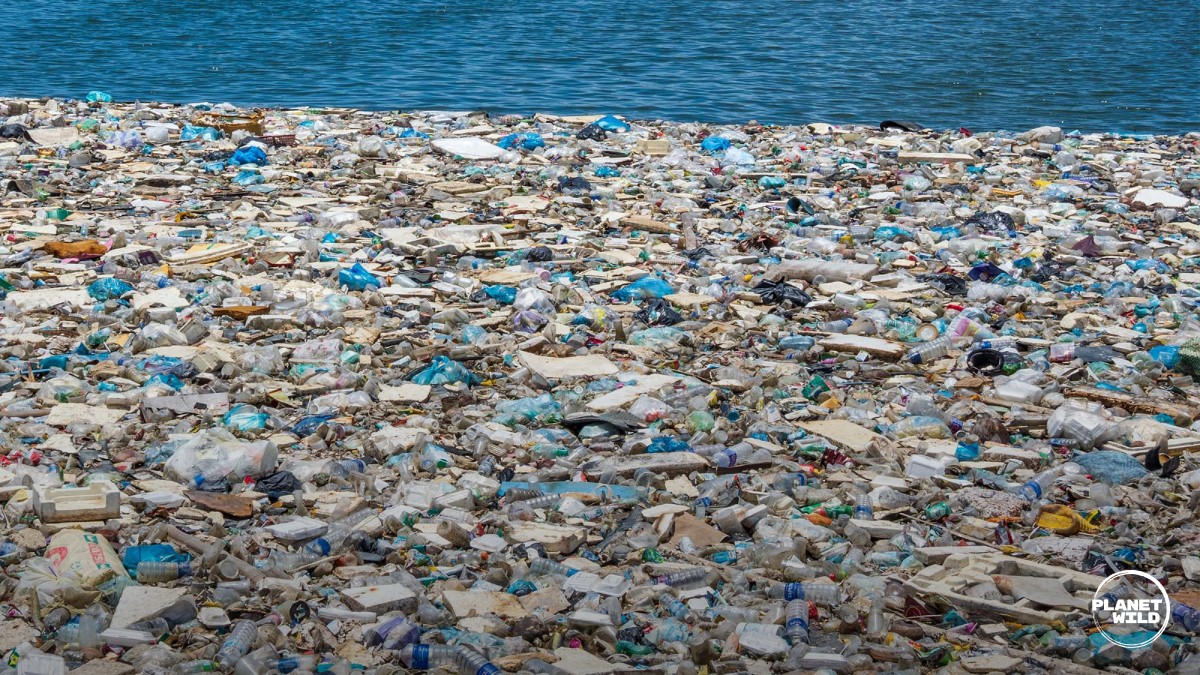 Plastic in the ocean
Plastic in the oceanBillions of tons of plastic waste are dumped into our oceans annually
-
Overfishing: The demand for fresh seafood by tourists can lead to overfishing, depleting fish populations and disrupting marine ecosystems. Local communities that depend on the sea for their livelihoods are often unable to compete with large-scale fishing operations catering to tourist demands. The World Wildlife Fund (WWF) reports that many fish species are now threatened due to overfishing driven by tourism.
-
Coastal Developments: The construction of resorts, hotels, and other tourist infrastructure along coastlines can destroy critical habitats such as mangroves, seagrass beds, and nesting sites for sea turtles. These developments also increase the risk of coastal erosion and vulnerability to natural disasters. According to a report by the United Nations, coastal development for tourism is a major driver of habitat loss in many regions.
-
Boat Traffic: Increased boat traffic from sightseeing tours and recreational activities can lead to oil spills, collisions with marine mammals, and disturbance of the seafloor. Unregulated boating also contributes to the spread of invasive marine species. The International Maritime Organization (IMO) has highlighted the need for stricter regulations on boat traffic in sensitive marine areas.
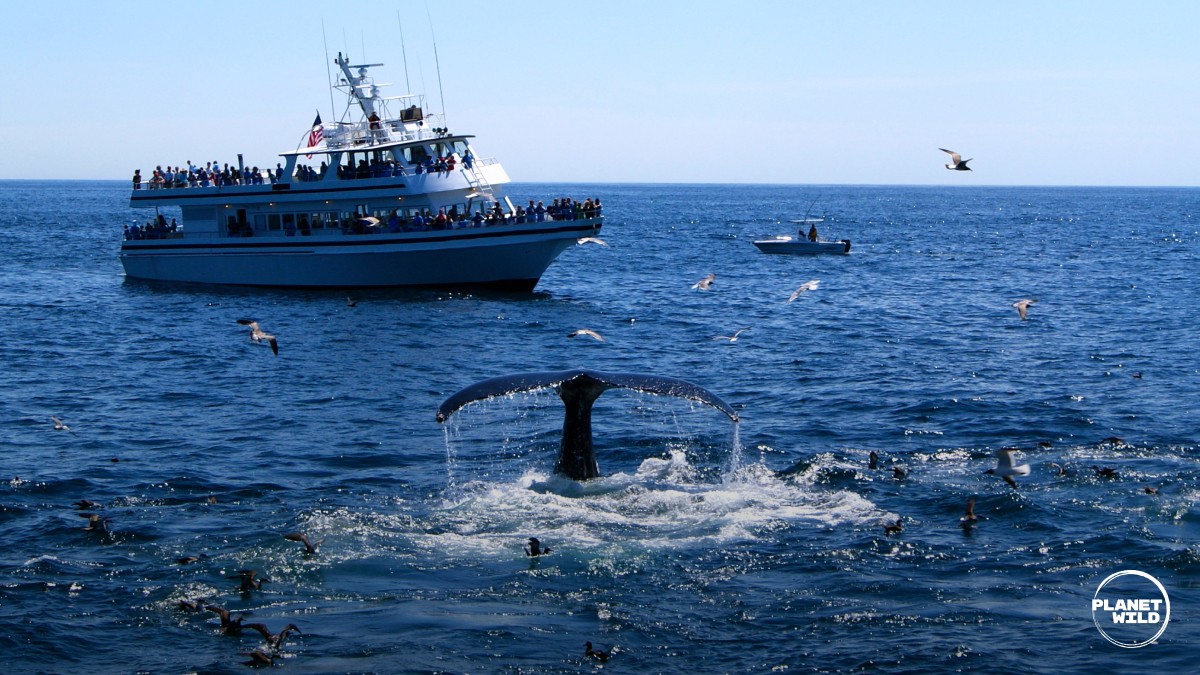 Whalewatching boat
Whalewatching boatMass tourism interrupts the migratory patterns of dolphins and whales
-
Noise Pollution: The noise generated by boats can disrupt marine life, particularly whales and dolphins, which rely on sound for communication and navigation. High levels of noise pollution can force these animals to move away from their natural habitats. A study by the National Oceanic and Atmospheric Administration (NOAA) found that noise pollution from boats can significantly affect the behavior and physiology of marine mammals.
2. How Does Coral Reef Destruction Occur Due to Tourism Activities?
Coral reef destruction due to tourism occurs through physical damage from divers and snorkelers, chemical pollution from sunscreens, and increased sedimentation from coastal development. Protecting these delicate ecosystems requires responsible tourism practices.
The allure of vibrant coral reefs draws millions of tourists annually, but this popularity comes at a cost. Several tourism-related activities contribute to the destruction of these delicate ecosystems:
-
Physical Damage: Divers and snorkelers, even when acting unintentionally, can cause significant physical damage to coral reefs. Fins brushing against coral, grabbing onto reefs for stability, or accidentally kicking coral can break or damage the fragile structures. According to a study by the Nature Conservancy, even a small amount of physical contact can stress coral and make it more susceptible to disease.
-
Chemical Pollution: Many sunscreens contain chemicals like oxybenzone and octinoxate, which are toxic to coral. When swimmers wearing these sunscreens enter the water, the chemicals leach out and can cause coral bleaching, a process where coral expels the algae living in its tissues, leading to starvation and death. The Environmental Protection Agency (EPA) has recognized these chemicals as harmful to marine life.
-
Increased Sedimentation: Coastal development, such as the construction of hotels and resorts, can lead to increased sedimentation in the water. Sediment smothers coral, blocking sunlight and hindering their ability to photosynthesize. This can weaken coral and make it more vulnerable to disease. Research from the University of Queensland shows that increased sedimentation is a major cause of coral reef decline.
Here’s a look at ways to reduce coral reef destruction:
-
Choose Reef-Safe Sunscreen: Opt for sunscreens that are mineral-based and free of oxybenzone and octinoxate. These sunscreens use zinc oxide or titanium dioxide as active ingredients, which are less harmful to coral reefs.
-
Practice Responsible Diving and Snorkeling: Maintain buoyancy control to avoid touching or kicking coral. Keep a safe distance from the reef and avoid stirring up sediment.
-
Support Sustainable Tourism: Choose tour operators that are committed to sustainable practices, such as minimizing waste, using eco-friendly products, and educating tourists about reef conservation.
-
Advocate for Marine Protected Areas: Support the creation and enforcement of marine protected areas, where activities that can harm coral reefs are restricted.
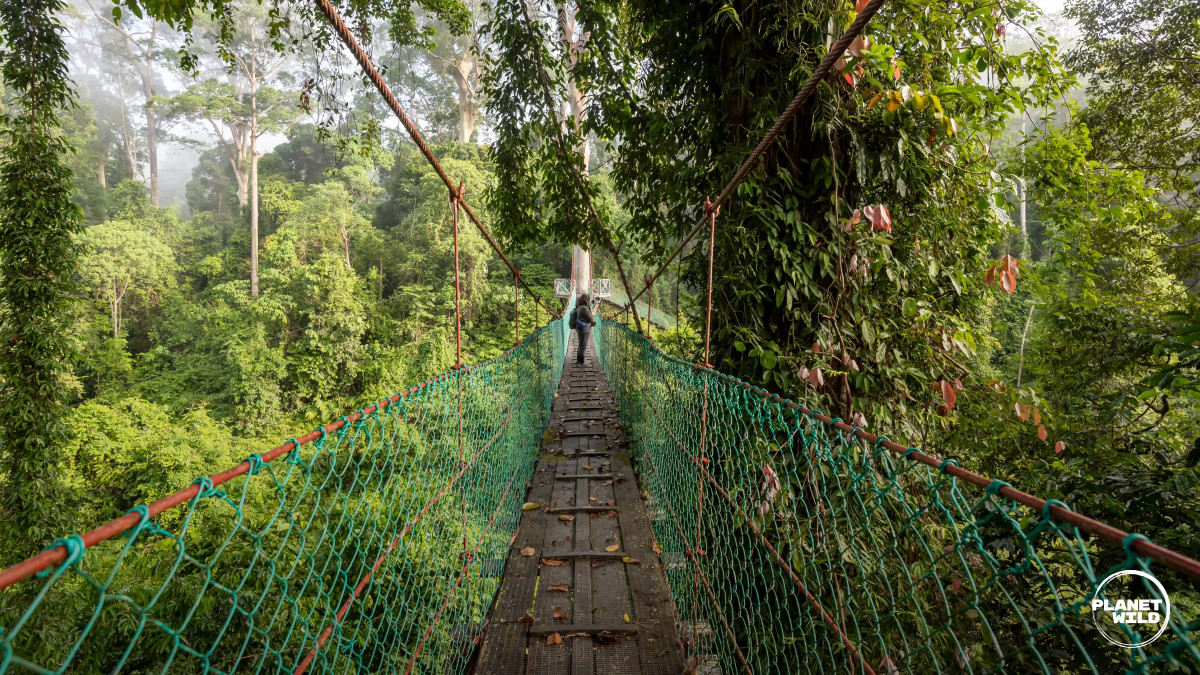 Woman enjoying a rainforest
Woman enjoying a rainforestEthical tourism is more important than ever
-
3. What Role Does Marine Pollution Play in Harming Ocean Life Due to Tourism?
Marine pollution from tourism introduces plastics, chemicals, and sewage into the ocean, harming marine life through ingestion, habitat destruction, and toxic exposure. Sustainable waste management practices are vital to mitigating these effects.
Tourism contributes significantly to marine pollution, which has devastating effects on ocean life. The introduction of various pollutants into the marine environment disrupts ecosystems and threatens the survival of countless species.
- Plastic Pollution: Tourism generates vast amounts of plastic waste, including single-use bottles, bags, and packaging. Much of this plastic ends up in the ocean, where it can persist for hundreds of years, breaking down into microplastics that are ingested by marine animals. According to a report by the Ellen MacArthur Foundation, by 2050, there could be more plastic than fish in the ocean by weight.
- Chemical Pollution: In addition to sunscreen chemicals, tourism-related activities can introduce other harmful chemicals into the ocean. These include cleaning agents, detergents, and oil spills from boats and cruise ships. These chemicals can poison marine life, disrupt their reproductive cycles, and damage their habitats. The International Union for Conservation of Nature (IUCN) has identified chemical pollution as a major threat to marine biodiversity.
- Sewage Pollution: Many coastal communities lack adequate sewage treatment facilities, leading to the discharge of untreated or poorly treated sewage into the ocean. This sewage contains bacteria, viruses, and nutrients that can contaminate shellfish, cause algal blooms, and deplete oxygen levels in the water, creating dead zones where marine life cannot survive. The World Health Organization (WHO) has linked sewage pollution to numerous health problems in coastal areas.
Mitigating the impact of marine pollution requires a multi-faceted approach:
- Reduce Plastic Use: Encourage tourists to use reusable water bottles, shopping bags, and food containers. Implement policies to reduce the use of single-use plastics in the tourism industry.
- Improve Waste Management: Invest in proper waste management infrastructure in coastal communities, including recycling programs and waste treatment facilities.
- Regulate Cruise Ship Discharges: Enforce stricter regulations on the discharge of waste from cruise ships, including sewage and ballast water, to prevent the introduction of pollutants and invasive species into marine environments.
- Promote Eco-Friendly Products: Encourage the use of eco-friendly cleaning products, detergents, and personal care items that are biodegradable and non-toxic.
4. How Does Overfishing Related to Tourism Affect Marine Ecosystems?
Overfishing driven by tourist demand depletes fish populations, disrupts food webs, and harms local fishing communities. Sustainable seafood choices and responsible fishing practices are crucial for preserving marine biodiversity.
The demand for fresh seafood by tourists can lead to overfishing, which has profound effects on marine ecosystems. The depletion of fish populations disrupts the delicate balance of the food web and threatens the livelihoods of local communities that depend on the sea for their sustenance.
- Depletion of Fish Stocks: Overfishing removes fish from the ocean faster than they can reproduce, leading to a decline in fish populations. This can have cascading effects throughout the food web, as predators that rely on these fish for food also decline. The Food and Agriculture Organization (FAO) estimates that nearly 90% of the world’s fish stocks are fully exploited, overexploited, or depleted.
- Disruption of Food Webs: The removal of key species from the food web can have cascading effects on the entire ecosystem. For example, the overfishing of predatory fish can lead to an increase in the populations of their prey, which can then overgraze on algae and other vegetation, disrupting the balance of the ecosystem.
- Impact on Local Communities: Overfishing can have devastating effects on local fishing communities that depend on the sea for their livelihoods. As fish populations decline, these communities may struggle to catch enough fish to support themselves, leading to economic hardship and social disruption.
Promoting sustainable seafood choices and responsible fishing practices is essential for mitigating the impact of overfishing:
-
Choose Sustainable Seafood: Encourage tourists to choose seafood that is certified as sustainable by organizations like the Marine Stewardship Council (MSC). This certification ensures that the fish were caught using methods that minimize harm to the environment and maintain healthy fish populations.
-
Support Local Fisheries: Whenever possible, purchase seafood directly from local fishermen who use sustainable fishing practices. This helps to support local communities and reduces the environmental impact of transporting fish over long distances.
-
Advocate for Strong Fisheries Management: Support policies that promote sustainable fisheries management, such as catch limits, gear restrictions, and marine protected areas.
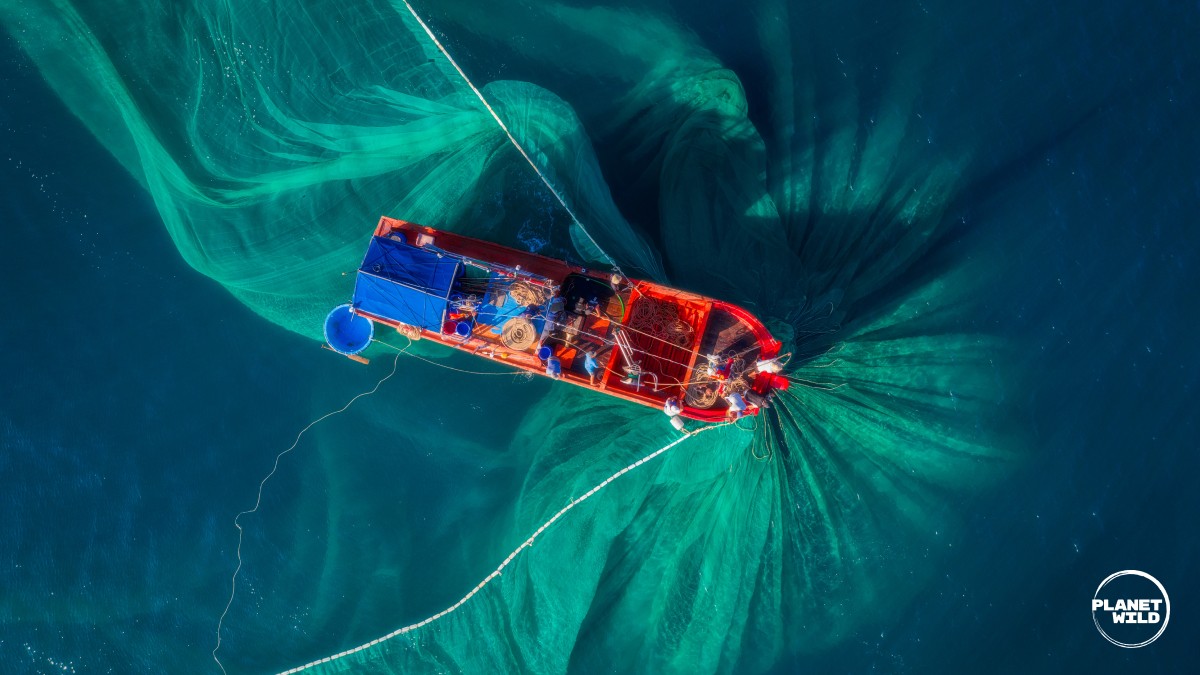 Fishing nets surrounding a fishing boat
Fishing nets surrounding a fishing boatDiscarded fishing nets are a huge problem for marine life
5. In What Ways Do Coastal Developments for Tourism Harm Marine Habitats?
Coastal developments for tourism destroy mangroves, seagrass beds, and nesting sites, increase erosion, and pollute water, leading to habitat loss and biodiversity decline. Careful planning and eco-friendly construction are essential for minimizing these impacts.
The construction of resorts, hotels, and other tourist infrastructure along coastlines can have significant impacts on marine habitats. These developments often lead to the destruction of critical ecosystems, increased pollution, and disruption of natural processes.
- Destruction of Mangroves and Seagrass Beds: Mangroves and seagrass beds are vital coastal habitats that provide numerous ecosystem services, including protecting shorelines from erosion, filtering pollutants, and providing habitat for a wide variety of marine species. Coastal developments often involve the clearing of these habitats to make way for construction, leading to habitat loss and biodiversity decline. A study by the United Nations Environment Programme (UNEP) found that coastal development is a major driver of mangrove destruction worldwide.
- Destruction of Nesting Sites: Many marine animals, such as sea turtles and seabirds, rely on beaches and coastal areas for nesting. Coastal developments can destroy these nesting sites, making it difficult for these animals to reproduce and survive. The Sea Turtle Conservancy estimates that coastal development is a major threat to sea turtle populations around the world.
- Increased Erosion: The construction of buildings and other infrastructure along coastlines can disrupt natural processes, such as sand dune formation, leading to increased erosion. This erosion can damage coastal habitats and infrastructure, and increase the risk of flooding.
- Water Pollution: Coastal developments can generate significant amounts of pollution, including sewage, stormwater runoff, and construction debris. This pollution can contaminate coastal waters, harming marine life and making it unsafe for swimming and other recreational activities.
Here are some strategies for minimizing the impact of coastal developments on marine habitats:
- Careful Planning: Conduct thorough environmental impact assessments before undertaking any coastal development project to identify potential impacts on marine habitats and develop mitigation measures.
- Sustainable Construction Practices: Use sustainable construction practices that minimize habitat destruction, reduce pollution, and conserve resources.
- Setback Requirements: Establish setback requirements that prohibit construction within a certain distance of the shoreline to protect coastal habitats and allow for natural processes to occur.
- Restoration Efforts: Implement restoration projects to restore degraded coastal habitats, such as mangroves and seagrass beds.
6. How Does Boat Traffic Contribute to Ocean Degradation in Tourist Areas?
Boat traffic in tourist areas causes oil spills, collisions with marine life, seafloor disturbance, and noise pollution, disrupting ecosystems and harming marine species. Regulating boat traffic and promoting responsible boating practices are essential.
Increased boat traffic from sightseeing tours, transport, and other recreational activities can have a range of negative impacts on marine ecosystems. These impacts include oil spills, collisions with marine mammals, disturbance of the seafloor, and the spread of invasive species.
- Oil Spills: Accidents involving boats and ships can lead to oil spills, which can have devastating effects on marine life. Oil spills can contaminate water, smother marine animals, and disrupt ecosystems. The International Tanker Owners Pollution Federation (ITOPF) has documented numerous oil spills caused by boat traffic in tourist areas.
- Collisions with Marine Mammals: Boats can collide with marine mammals, such as whales and dolphins, causing injury or death. These collisions are particularly common in areas where there is a high volume of boat traffic and where marine mammals are present. The National Marine Fisheries Service (NMFS) has reported numerous instances of boat collisions with marine mammals.
- Seafloor Disturbance: Anchors and boat propellers can disturb the seafloor, damaging sensitive habitats such as seagrass beds and coral reefs. This disturbance can disrupt ecosystems and harm marine life. A study by the University of Plymouth found that repetitive anchor drops can scar the ocean floor and uproot seagrass.
- Spread of Invasive Species: Boats can transport invasive species from one area to another, introducing them into new environments where they can outcompete native species and disrupt ecosystems. The International Maritime Organization (IMO) has identified boat traffic as a major pathway for the spread of marine invasive species.
Mitigating the impacts of boat traffic requires a combination of regulations, responsible boating practices, and technological solutions:
- Speed Restrictions: Implement speed restrictions in areas where marine mammals are present to reduce the risk of collisions.
- No-Go Zones: Establish no-go zones in sensitive habitats, such as seagrass beds and coral reefs, to protect them from disturbance.
- Mandatory Pilotage: Require boats to use trained pilots in areas with complex navigation or sensitive marine environments.
- Use of Alternative Fuels: Encourage the use of alternative fuels, such as biodiesel or electric power, to reduce pollution from boat traffic.
- Regular Maintenance: Ensure boats are properly maintained to prevent oil leaks and other sources of pollution.
7. What Are the Effects of Noise Pollution from Tourist Activities on Marine Life?
Noise pollution from tourist boats disrupts marine animal communication, navigation, and feeding behaviors, causing stress and habitat displacement. Reducing noise levels and regulating boat traffic can mitigate these harmful effects.
The noise generated by boats, jet skis, and other watercraft can have significant impacts on marine life. Marine animals rely on sound for communication, navigation, and finding food, and noise pollution can disrupt these essential activities.
- Disruption of Communication: Many marine animals, such as whales and dolphins, use sound to communicate with each other. Noise pollution can interfere with these communications, making it difficult for animals to find mates, coordinate hunting, and warn each other of danger. A study by the Woods Hole Oceanographic Institution found that noise pollution can reduce the range over which whales can communicate by as much as 90%.
- Interference with Navigation: Marine animals use sound to navigate and orient themselves in the ocean. Noise pollution can interfere with this navigation, making it difficult for animals to find their way and increasing their risk of becoming lost or disoriented.
- Disruption of Feeding Behavior: Some marine animals use sound to locate and capture prey. Noise pollution can interfere with this feeding behavior, making it difficult for animals to find food and increasing their risk of starvation.
- Stress and Physiological Effects: Exposure to high levels of noise pollution can cause stress and other physiological effects in marine animals. These effects can weaken their immune systems, reduce their reproductive success, and make them more vulnerable to disease.
To mitigate the impacts of noise pollution on marine life, we can implement:
- Speed Restrictions: Slowing down boats can reduce the amount of noise they generate.
- Quieter Technologies: Encouraging the use of quieter boat engines and propellers can also reduce noise pollution.
- Seasonal Restrictions: Limiting boat traffic during sensitive times of year, such as breeding or migration seasons, can help to protect marine animals from noise pollution.
- Acoustic Monitoring: Implementing acoustic monitoring programs to track noise levels in marine environments and identify areas where noise pollution is a particular problem.
8. How Can Tourists Minimize Their Impact on the Ocean While on Vacation?
Tourists can minimize their impact by choosing eco-friendly accommodations, reducing plastic use, respecting marine life, and supporting sustainable tourism operators. Responsible travel choices protect marine ecosystems for future generations.
There are many ways that tourists can minimize their impact on the ocean while on vacation. By making responsible choices and adopting sustainable practices, travelers can help to protect marine ecosystems and ensure that they remain healthy and vibrant for future generations.
- Choose Eco-Friendly Accommodations: Look for hotels and resorts that are committed to sustainability, such as those that have earned eco-certification or that implement practices such as reducing water and energy use, recycling, and using eco-friendly cleaning products.
- Reduce Plastic Use: Avoid using single-use plastics, such as water bottles, shopping bags, and straws. Bring your own reusable items and dispose of waste properly.
- Respect Marine Life: Avoid touching or disturbing marine animals, and keep a safe distance from them. Do not feed marine animals, as this can disrupt their natural feeding behaviors.
- Choose Sustainable Tourism Operators: Select tour operators that are committed to sustainability, such as those that offer eco-tours or that support local conservation efforts.
- Use Reef-Safe Sunscreen: Choose sunscreens that are mineral-based and free of chemicals like oxybenzone and octinoxate, which are harmful to coral reefs.
- Support Local Communities: Purchase goods and services from local businesses to support the local economy and reduce the environmental impact of transporting goods over long distances.
9. What Role Does Research Play in Understanding and Mitigating the Impact of Tourism on the Ocean?
Research provides critical data on the impacts of tourism on marine ecosystems, informs effective conservation strategies, and supports evidence-based policy decisions for sustainable tourism management.
Research plays a crucial role in understanding and mitigating the impact of tourism on the ocean. By conducting scientific studies and gathering data, researchers can identify the specific ways in which tourism is affecting marine ecosystems and develop effective strategies for minimizing these impacts.
-
Identifying Impacts: Research can help to identify the specific ways in which tourism is affecting marine ecosystems, such as the destruction of coral reefs, the pollution of coastal waters, and the disruption of marine life. This information is essential for developing targeted conservation strategies.
-
Developing Mitigation Strategies: Research can also help to develop and evaluate strategies for mitigating the impact of tourism on the ocean. For example, researchers can study the effectiveness of different types of marine protected areas, the impact of different types of sunscreen on coral reefs, and the effectiveness of different methods for reducing plastic pollution.
-
Informing Policy Decisions: Research can inform policy decisions related to tourism and marine conservation. For example, research can be used to justify the creation of marine protected areas, the implementation of regulations on boat traffic, and the promotion of sustainable tourism practices.
Here are some examples of research that has played a key role in understanding and mitigating the impact of tourism on the ocean:
- Studies on the impact of sunscreen chemicals on coral reefs have led to the development of reef-safe sunscreens and the implementation of bans on the sale of sunscreens containing harmful chemicals in some areas.
- Research on the impact of plastic pollution on marine life has led to increased awareness of the problem and the development of strategies for reducing plastic use.
- Studies on the effectiveness of marine protected areas have led to the creation of more and larger protected areas around the world.
10. How Can SIXT.VN Help Tourists Travel More Responsibly in Vietnam and Protect the Ocean?
SIXT.VN offers eco-friendly transportation options, promotes sustainable tourism practices, partners with local communities, and provides information on responsible travel, helping tourists minimize their environmental footprint in Vietnam.
SIXT.VN is committed to helping tourists travel more responsibly in Vietnam and protect the ocean. We offer a range of services and initiatives that promote sustainable tourism practices and minimize the environmental impact of travel.
- Eco-Friendly Transportation: SIXT.VN offers a variety of eco-friendly transportation options, including electric vehicles and hybrid cars. We also encourage the use of public transportation and biking whenever possible.
- Sustainable Tourism Packages: SIXT.VN offers sustainable tourism packages that include accommodations, tours, and activities that are committed to sustainability. These packages are designed to minimize environmental impact and support local communities.
- Partnerships with Local Communities: SIXT.VN partners with local communities to promote sustainable tourism and support conservation efforts. We work with local businesses and organizations to develop tourism products and services that benefit both tourists and the environment.
- Responsible Travel Information: SIXT.VN provides information on responsible travel practices, such as reducing plastic use, respecting marine life, and choosing sustainable seafood. We also encourage tourists to learn about the local culture and customs and to support local communities.
By choosing SIXT.VN, tourists can travel more responsibly in Vietnam and help to protect the ocean for future generations. Book your eco-friendly travel arrangements with SIXT.VN today and make a positive impact on the environment. Address: 260 Cau Giay, Hanoi, Vietnam. Hotline/Whatsapp: +84 986 244 358. Website: SIXT.VN.
FAQ About Tourism and Its Effect on the Ocean
1. What is sustainable tourism, and why is it important for ocean conservation?
Sustainable tourism minimizes negative impacts on the environment and local culture, supporting conservation efforts and benefiting local communities. It’s vital for preserving ocean ecosystems for future generations.
2. How does cruise ship tourism specifically affect the ocean environment?
Cruise ships can discharge pollutants, damage coral reefs, and contribute to overfishing, negatively impacting marine ecosystems. Responsible cruise tourism practices are essential for reducing these effects.
3. What are some examples of eco-friendly accommodations that tourists can choose?
Eco-friendly accommodations include eco-lodges, hotels with sustainability certifications, and accommodations that use renewable energy, conserve water, and minimize waste.
4. How can tourists ensure they are choosing reef-safe sunscreen?
Tourists can choose mineral-based sunscreens containing zinc oxide or titanium dioxide, avoiding those with oxybenzone and octinoxate, which harm coral reefs.
5. What are marine protected areas (MPAs), and how do they help protect the ocean from tourism impacts?
MPAs are designated areas that restrict certain activities to protect marine ecosystems, allowing for biodiversity conservation and sustainable tourism practices.
6. How does responsible diving and snorkeling contribute to coral reef conservation?
Responsible practices, such as maintaining buoyancy, avoiding contact with coral, and using reef-safe sunscreen, minimize physical and chemical damage to coral reefs.
7. What role do local communities play in sustainable tourism and ocean conservation?
Local communities are essential in managing tourism sustainably, preserving their cultural heritage, and participating in conservation efforts that benefit both the environment and their livelihoods.
8. What is the impact of souvenir shopping on marine ecosystems, and how can tourists shop responsibly?
Souvenir shopping can contribute to overexploitation of marine resources. Tourists can shop responsibly by purchasing locally made, sustainable products and avoiding items made from endangered species.
9. How does climate change exacerbate the impacts of tourism on the ocean?
Climate change increases ocean temperatures and acidification, further stressing marine ecosystems already impacted by tourism, making sustainable practices even more critical.
10. What certifications or labels can tourists look for when choosing sustainable tourism operators?
Tourists can look for certifications like Green Globe, Travelife, and B Corp, which indicate a commitment to environmental and social sustainability in tourism operations.

